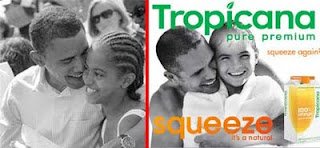Advertisements are everywhere we turn, either in print, on billboards and in magazines or in the form of television commercials. The power of many of these advertisements come from ad endorsements. Even though a celebrity will naturally capture attention, companies select their endorsers much more carefully than we might expect.
For example, companies don't just select a television or movie star who has recently been in the spotlight, but an individual who carefully represents the company's brand. For example, Target refused to have Anna Sui's new clothing line worn on the set of Gossip Girl, despite the fact that the show inspired the collection in the first place. An Anna Sui advertisement recently publicized the new clothing line at Target based on each of the Gossip Girl characters. This television ad ran during the break of the actual Gossip Girl show, which airs Mondays at 9PM.
Anna Sui clothing line available at Target loosely
based on the distinct styles of each female character
on the television hit, Gossip Girl.
Despite this original plan for Anna Sui's clothing line to be featured on the show, the designer was not able to send her clothes to the set of Gossip Girl for the young female stars to actually wear.
Leighton Meester and Blake Lively, who star on Gossip Girl.
Executives at
Target feared that their company would be "too closely associated with the show." This is clearly a disclaimer of sorts for each of the star's debased television personas. With themes of debauchery, drunkenness and sexually promiscuous behavior, Target refused to have the stars of the show concretely associated with the clothing line, despite the fact that the inspiration had been drawn from the celebrity cast itself.
This is one example of how companies not only seek to make a profit from celebrity images, but the celebrity selection is under close and careful inspection. Similarly, supermodel Kate Moss originally had a contract with Burberry and Chanel, but cancelled the deal because of her use of cocaine. More recently, due to her outburst at the U.S. Open could have cost Serena Williams two of her largest sponsors, Nike and Kraft Foods.
Just as companies seek to eliminate stars with tarnished images, they also harness the positive energy and reputations of others. Based on an ad I recently saw in a fashion magazine, Walmart and L.E.I. Jeans did not only select Taylor Swift because she is popular teen star at the moment, but because she is considered one of the more upstanding young female stars. The ad depicts a photo of her onstage, with the words in white print across the center: "Life Energy Intelligence Taylor Swift." The lack of punctuation not only makes these three qualities synonymous with Taylor, but then attaches these qualities to creating an all-American image for both the classic jeans and the Walmart store.
All of these examples suggest that companies are very much aware of the reputations and images of the celebrities that they hire.
The bottom line is celebrity endorsers can drive the success of an ad campaign, but choosing the wrong celebrity becomes risky business...











